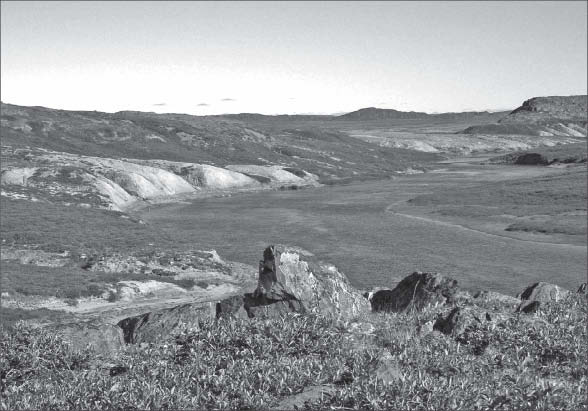Newmont Mining (NMC-T, NEM-N)has written down the entire US$1.6-billion net book value of its Hope Bay gold project in remote Nunavut. The decision comes just weeks after the company announced it was placing the project on care and maintenance following its “evaluation of development options and economic feasibility for the project, compared with other project and development opportunities within our wider project pipeline.”
On Dec. 31, 2011, Newmont recorded a US$2.09-billion impairment charge related to Hope Bay. This includes the US$1.6 billion it spent acquiring Miramar Mining for the project in late 2007, as well as presumably US$500 million on further development and mine construction.
The US$3.24-per-share, non-cash writedown saw the company’s income from continuing operations drop to US$500 million, or US$1.02 per share, in 2011, compared with US$2.3 billion, or US$4.69 per share, in 2010. Taking away the writedown, Newmont reported adjusted net income of US$2.2 billion, or US$4.39 per share, in 2011.
Newmont’s Chris Hanks, vice-president of environmental affairs for Hope Bay Mining, a Newmont subsidiary, told the CBCthat exploration at the project has been disappointing. “We are not satisfied with the geological package we’ve put together at this time . . . and as all projects do, we are competing globally for capital, and Newmont has other places it wishes to put its capital right now. So Hope Bay has fallen down the line a little ways.”
According to Nunavut’s Nunatsiaq News, Hanks says that “we’re either going to close up the place, or properly take care of it . . . the end of the story is not told. Lots of sites come on and off care and maintenance.”
Newmont’s newly released annual report suggests it is preparing to back out of the project for several years to come, as the total impairment charge for Hope Bay takes into account US$24 million in “estimated recoverable value, net of transportation and selling costs, of the related assets at Hope Bay.”
Jerry Clyne, Hope Bay Mining’s business manager, also told Nunavut locals at a Feb. 15 presentation that Newmont plans to use the annual sealift this year not for resupply, but to ship equipment away from the project. Hope Bay is not included in Newmont’s 2012 capital expenditure outlook or the company’s 2017 strategic growth plan.
The logistical difficulties of working 150 km north of the Arctic Circle likely factored in shutting the project down. Harsh winter conditions and severe isolation would drive up capital costs, and there is just a six-week window of time to transport the bulk of goods and equipment to the site in summer, when ice in the Northwest Passage usually melts.
On Dec. 15, a fire at the principal deposit complex, Doris North, destroyed a building, an ambulance, a fire truck and other emergency equipment housed inside, forcing non-essential workers to leave early for Christmas. The cause of the fire, which lasted four hours, is being investigated. Newmont plans to leave only a skeleton crew in place to meet environmental and safety commitments. Anywhere from 200 to 400 employees and contractors working at the site stand to lose their jobs, about 150 of which are Inuit.
Questions have also been raised about the competitiveness of rates charged by Kitikmeot, a subsidiary of the Kitikmeot Inuit Corp., which held around half of the contracts at Hope Bay. Newmont’s financial reports show the company invested US$101 million at the project in 2011, down slightly from US$115 million in 2010, but much more than the US$5 million spent in 2009.
In 2011, Newmont completed 90,000 metres of surface drilling and 10,000 metres of underground drilling at the 10-million-oz. “gold potential” project. It also nearly completed a decline at the high-grade Doris North deposit to provide access for test mining and underground exploration, and had been stockpiling “ore” for some time in preparation for building a mill this year.
At presstime on Feb. 24, following Newmont’s 2011 earnings announcement and the writedown at Hope Bay, shares of the company were down US$1.57, or 2.5%, in New York to US$62.23. The company has a 52-week trading range of US$50.05 to US$72.42.


Be the first to comment on "Newmont writes off Hope Bay"